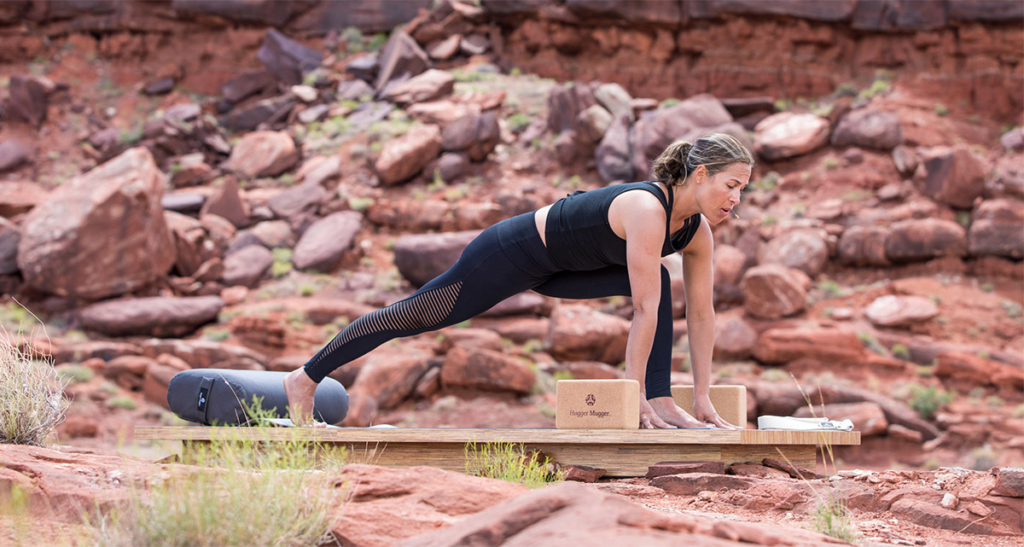Why Practice Slow Flow Yoga?
Vinyasa (aka flow yoga) has been the most popular form of asana practice for a while now. Based on concepts introduced through Ashtanga Yoga, vinyasa features a yoga “routine,” a flowing movement sequence. In most popular classes, students flow through the sequence at a pretty good clip. Moving quickly from one pose to the next raises the heart rate. In some classes, teachers turn up the heat, which induces sweat. This makes sense for Western practitioners.
In the West, exercise has almost always included these two factors, among others. So as yoga has integrated into Western culture, it looks like a combination of asana practice and Western exercise. Putting together a unique yoga flow gives teachers an opportunity to flex their creative muscles. Surya Namaskar (Sun Salutation) has taken all kinds of fun and innovative flights of fancy in the advent of vinyasa’s popularity.
But some of us, old-school yogis and more meditative types, like to cool the temperature. I enjoy linking poses in a sequence, but I prefer to slow my flow. For me, yoga practice is a time to calm my nervous system through mindful movement. I prefer weight training and walking in nature to build muscle and raise my heart rate. What I love about yoga asana is its ability to foster mindfulness. Slowing my flow fosters the body-mind connection.
Here’s Why You Should Try Slowing Your Flow Yoga
Unfolding: When you spend time in each pose, your body has a chance to unwind soft tissue resistance. It takes time to move into stillness in a pose. Our bodies and minds need time to adjust to each new position, and it’s only when we can relax into the pose that yoga’s “magic” can unfold. That magic is the integration of body and mind, through letting go of effort. Remember that “mastery” of asana in the yoga sutras is defined like this (in Alistair Shearer’s translation): “It is mastered when all effort is relaxed and the mind is absorbed in the Infinite.” Taking your time in each pose, allows you to make adjustments so that you can relax effort.
Mindfulness: One of the key elements of practicing mindfulness is slowing down. Practicing slow flow yoga gives us time to tune into the ever-changing process of every asana. Slowing down allows us to feel the process of breathing, how the breath moves our bodies, and the process of letting go of effort so that we can “be” the pose rather than “doing” the pose.
Props: It’s quite challenging to incorporate yoga props into a fast flow. By the time you’ve set your props up, the rest of the class has often gone on to the next pose. Yoga props help us practice with structural integrity. That structural integrity allows us to let go of effort and be the asana.
Transitions: This is probably my favorite way of slowing the flow. I think of each vinyasa as one long asana. Rather than seeing flow yoga as a succession of poses, I make the transitions between poses just as important as the formal asanas. Slowing down makes this easier. Try giving equal attention to the movements between the formal poses. This promotes mindfulness in motion.
Your Individual Flow Practice
If a fast-paced yoga flow is your favorite practice, by all means, continue. But sometimes, you might want to try slowing it down. Get to know each asana in a different way. Feel the transitions. Slowing your flow practice at times might enrich your fast flow practice.
Leave a Reply Cancel reply
Recent Comments
Archives
- December 2025
- November 2025
- October 2025
- September 2025
- August 2025
- July 2025
- June 2025
- May 2025
- April 2025
- March 2025
- February 2025
- January 2025
- December 2024
- November 2024
- October 2024
- September 2024
- August 2024
- July 2024
- June 2024
- May 2024
- April 2024
- March 2024
- February 2024
- January 2024
- December 2023
- November 2023
- October 2023
- September 2023
- August 2023
- July 2023
- May 2023
- March 2023
- August 2022
- July 2022
- June 2022
- May 2022
- April 2022
- March 2022
- February 2022
- January 2022
- December 2021
- November 2021
- October 2021
- September 2021
- August 2021
- July 2021
- June 2021
- May 2021
- April 2021
- March 2021
- February 2020
- January 2020
Theme by The WP Club . Proudly powered by WordPress
